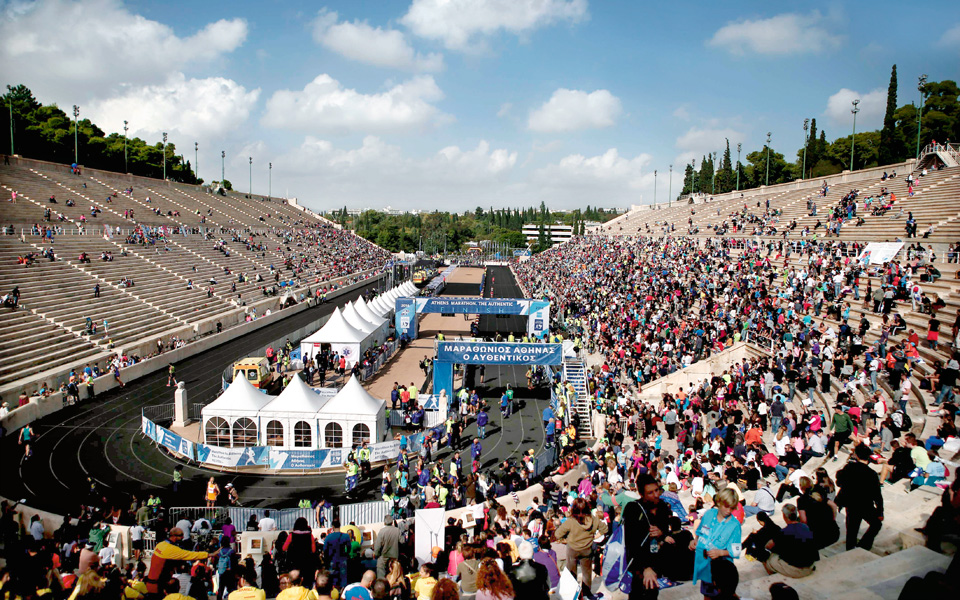The real battle in the Athens Marathon begins 10 kilometers before the end. At this advanced stage of the race, when the legs start feeling heavy and muscles begin to twitch frantically as a result of dehydration, runners who have not stored away enough energy to power their way home and over the event’s finish line begin losing control. Runners must persevere through many grueling kilometers of slight uphill running to reach this point before a sweet downhill stretch that leads all the way to the end. Prudent runners prevail at this event. The Athens Marathon and the Boston event are both considered to be extremely tough courses demanding considerable strategy. “The marathon runner needs to be able to transcend physical ability. This means one must prepare and put in personal time, but, even so, he will inevitably tire, to greater or lesser degree, at some point during the race,” explains Nikos Polias, a now-retired Athens Marathon specialist, who has won the event more times than any other Greek runner and also holds the national record of 2 hours and 17 minutes. “But this is what represents the magic and challenge of it all – every time you are confronted by something new, you need to find the strength to overcome it and achieve your goal,” he adds.
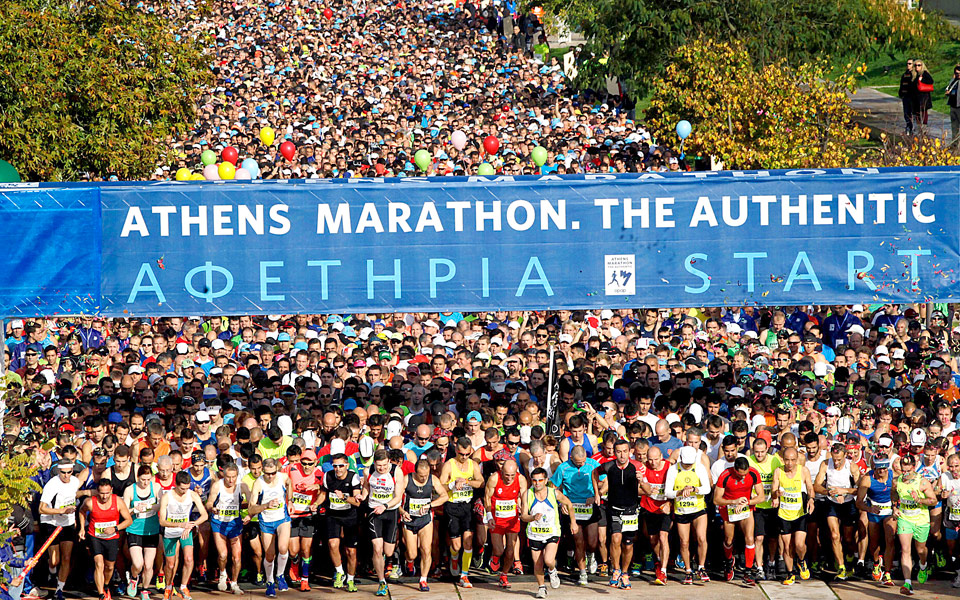
In more recent years, organizers have branded the Athens event as the Authentic Marathon as a result of its link to ancient times and Pheidippides, who is said to have run from Marathon to Athens to deliver news of a military victory against the Persians in the Battle of Marathon (490 BC) before dropping dead. Some of the world’s leading runners ran this same route for the marathon event of the Athens Olympics in 2004. The modern history of the event, or “classic route,” as it was initially described by organizers, began in 1955 when the Greek athletics federation SEGAS sought to establish the staging of an international race event every two years. By the mid-1970s, however, the International Athens Marathon had lost its appeal and was luring significantly fewer runners. In 1983, SEGAS attempted to upgrade the race. As part of this effort, it was renamed the Peace Marathon, established as an annual event, and dedicated to the memory of the Balkan Games champion athlete, politician and peace activist Grigoris Lambrakis. Since 2010 – which marked the 2,500th anniversary of the Battle of Marathon – the race has been rejuvenated, attracting a considerable number of runners from all over Greece and abroad. This year, organizers expect some 40,000 participants to run the full 42.195k distance and the shorter five and ten-kilometer parallel events, all staged on 8 November. The event has developed into a celebration of Athens. Never before have so many amateur Greek runners gathered in such numbers to take part in a sporting event. Since 2011, an increasing number of runners have sought to cover the full marathon distance. Also, following the example set by this successful event, the number of road races staged around the country has grown sevenfold.
“ This year, organizers expect some 40,000 participants to run the full 42.195k distance and the shorter five and ten-kilometer parallel events, on 8 November.”
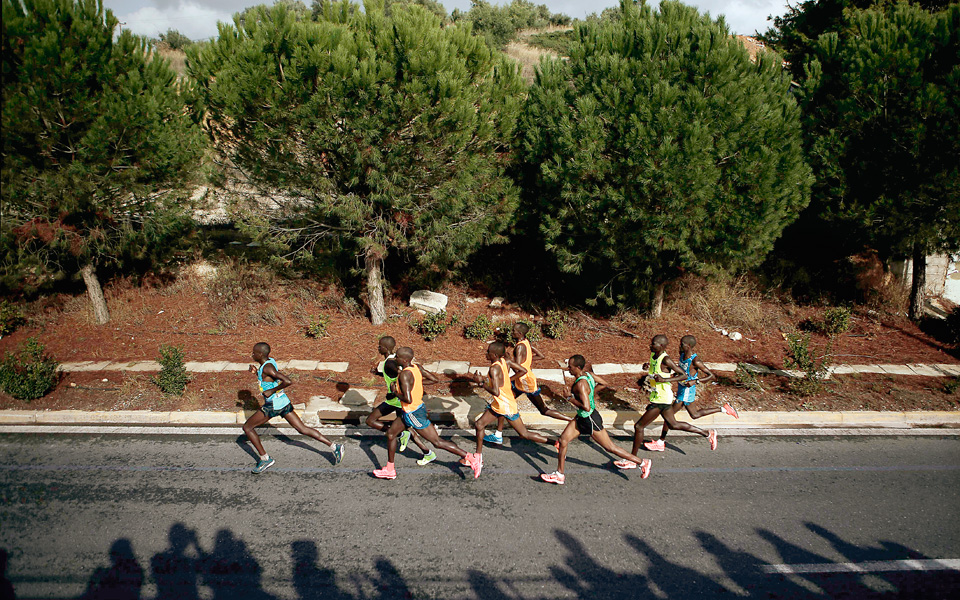
© Angelos Tzortzinis
THE EMOTION
Before the break of dawn on the day of the race, 250 buses will transport the runners from various points in central Athens to the starting area in Marathon, now on the northeastern outskirts of Athens. Once having passed a bend towards the right, around the Tomb of Marathon, where the dead soldiers of the Battle of Marathon are buried, the runners will have already completed the first six kilometers of the route. Flanked by farming land and small shops, the bulk of the course that follows is very lonely. Small villages occasionally pop up along the way. At some, bands offer live music performances while local residents typically cheer on the runners. The first signs of urban life begin to emerge as the course nears the 30k mark. The crowds of spectators begin to thicken, as does the applause. However, the biggest reward for all runners, from the fastest to the slowest, comes right before the end, when the wonderful, white marbled Panathenaic Stadium, popularly known as the Kallimarmaro, emerges like a giant statue carved into the heart of the city. This is where the first modern Olympic Games were held in 1896 and where Greek runner Spyros Louis, a water-carrier by trade, won the marathon race on that historic occasion. For first-time Athens Marathon runners, the sight of the stadium alone is enough to stir the emotions and make the eyes water. “I also felt the emotion. I had made it. From as early as that afternoon, I had already begun thinking about my next marathon race. That’s how my passionate bond with running started,” says amateur runner Marios Kritikos, who completed his first Athens Marathon in 2011.
“ Τhe biggest reward for all runners, from the fastest to the slowest, comes right before the end, when the wonderful, white marbled Panathenaic Stadium emerges like a giant statue carved into the heart of the city.”
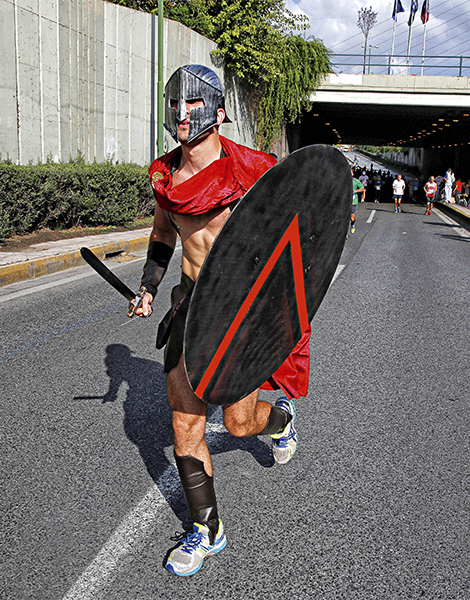
© Petros Giannakouris
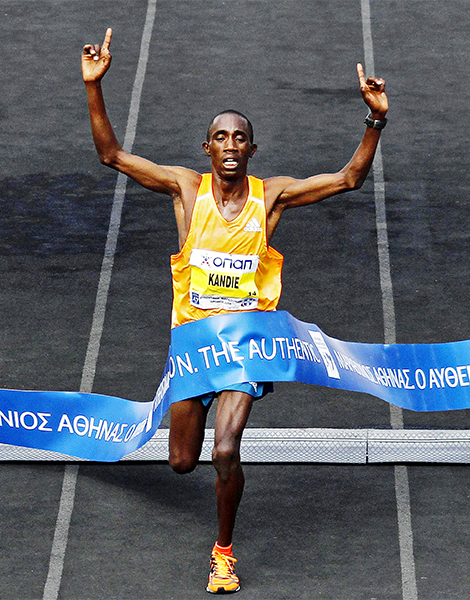
© Alkis Konstantinidis
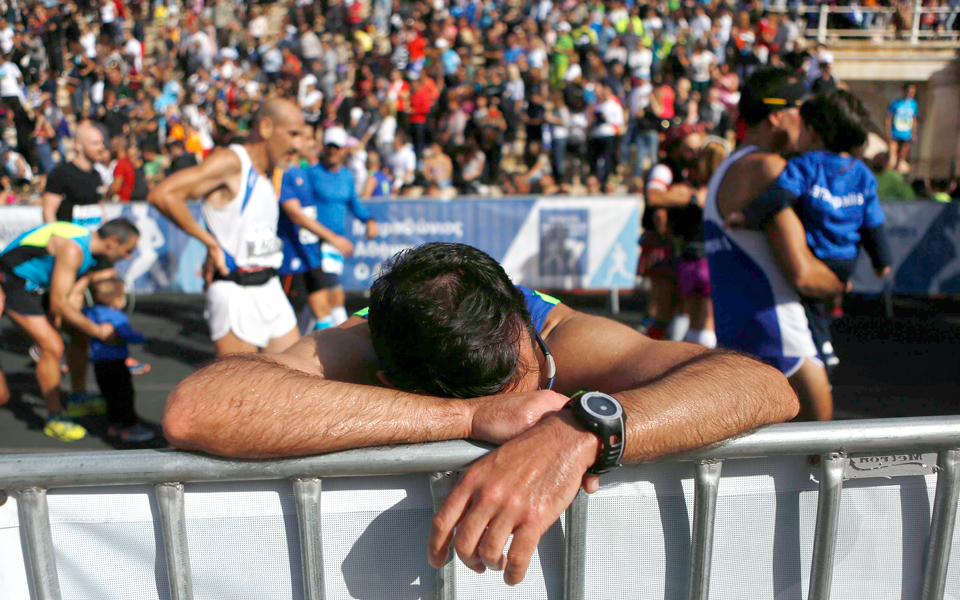
© Alkis Konstantinidis
COURSE SECRETS
The course’s first ten kilometers are flat and by far the easiest. However, runners spurred by legs that are still fresh and a mood for personal records must not get carried away at this early stage. “I started every race conservatively, without taking risks,” notes Polias, the event’s multi-winning Greek record holder, who ended his sporting career by running in the Athens Olympics in 2004. “I didn’t care what the others were doing. My objective was to do battle, overcome and transcend myself.” The course’s degree of difficulty gradually increases as the kilometers accumulate. This marathon begins to reveal its harshest qualities at the 16k mark, where the first serious uphill challenges start testing the legs of participants. Polias recommends that runners maintain their pace at this stage, or even slow down, as many more kilometers of uphill running lie ahead. The course’s main uphill stretch begins, with a slight incline, at the 19k mark. The degree of difficulty increases at the 20k mark, where the angle averages 2.3 degrees. Remaining focused is important at this stage, while it is also essential to set small, short-distance objectives and constantly replenish at the drink stations along the way. The 25k mark, where the average incline reaches 3 degrees, represents the course’s most grueling stage. The next water and energy drink station is just a few hundred meters ahead, a vitally important step closer towards successful completion. Over the next few kilometers, which are located within the city, athletes who have run a carefully managed race and have oxygen to spare may enjoy some Athenian scenery before turning to hit the final stretch towards the Kallimarmaro. The Athens Concert Hall, the glass-sheet layered sculpture of a runner opposite the Athens Hilton and the War Museum are all located along this stretch. Once past the Presidential Mansion, located at the rear of the National Garden, the Kallimarmaro will emerge into view. Thousands of spectators will have gathered to cheer the arrival of the runners. This marathon’s course does not unfold along endless straight stretches, as is the case at equivalent events in other European cities. The fluctuating course of the Athens Marathon breaks the monotony and intensifies the emotions runners feel. Upon crossing the finish line, runners will feel greatly rewarded by the experience, regardless of performance time. “Nothing is handed to you in running,” Polias says. “You need to make great effort to gain every little bit.”
Originally published in Kathimerini newspaper
“ The course’s degree of difficulty gradually increases as the kilometers accumulate.”

